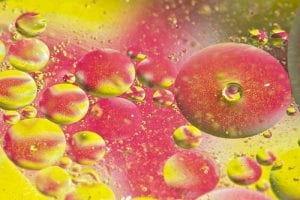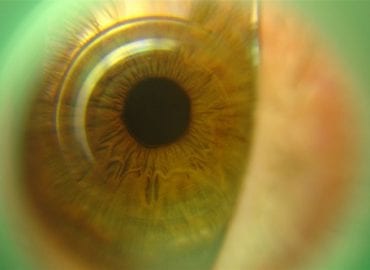Dry eyes are a common eye symptom caused by a dysfunctional tear film. There are many different causes, with a number of products designed to combat the varying issues. I tailor a specific regime to help your unique dry eyes situation.
The tear film lies in front of the eye and exists to protect our eyes from external agents like dust and small insects. This film actively flushes these unwanted substances away. Tear film is even more important to people that wear contact lenses, as you need a layer of tear film in between the contact lens and the eye’s cornea.
Oil and Water
Tear film has two main components – oil and water. We need water to consistently moisten (lubricate) the eye, but we also need the perfect balance of oil to sit in front of the water layer to stop it from evaporating. So, what can go wrong, thus causing dry eyes?

Quality and Quantity
If your eyes’ tear film is lacking in either oil or water, you have a ‘deficiency’. When the quality of the oil or water is inferior, you have a ‘dysfunction’. There are 4 main types of dry eyes, and sometimes you’ll have a combination of more than one.
The 2 most common types of dry eye relate to a quantity issue – you lack the correct amount of oil and/or water. This is a very prevalent issue amongst women over the age of 50. Long-term use of cosmetics, for example mascara, can contribute to this problem.
Types of Dry Eyes
The various types of dry eyes have a range of different symptoms, and we often see varying levels of severity from mild, moderate, to severe.
- If you have a constant redness in the eyes, most probably it’s a result of a deficiency of both water and oil compounds.
- When your eyes are hard to open in the morning because they’re sticky and feel gritty, the cause is often a poor quality oil component within the tear film.
- Watery eyes (weeping for no reason) are caused by a lack of oil in the tear film. This is rarely caused by an overabundance of water. The problem is, there is nothing to hold the water in the eye. People often say this couldn’t be a form of ‘dry eyes’ because their eyes are extremely wet, but the truth is, their eyes are dry in terms of oil content. We once had a patient who was a professor with very watery eyes. Can you imagine the embarrassment of constantly ‘crying’ in front of your peers and students?
Treatment Methods
Quantity: For moderate to severe problems we recommend the TheraTears Nutrition with Omega-3 dietary supplement. This helps tear production (quantity) for both water and oil components. As this treatment occurs within the body via nutritional supplement, it takes around 4 weeks before the effects kick in. On the other side of the coin, once you stop taking the supplement there is a carry-over effect of approximately 3 weeks.
Quality: When your oil glands are blocked due to low quality oil we need to cleanse the eyelids with eyelid cleansers like SteriLid Eyelid Cleanser. These unblock the tear ducts, and once the bad oil is removed the good oil beneath is able to come to the surface.
Eye drops: Visual Q Eyecare recommends use of different eyedrops depending on the severity of dryness and whether the water or oil component is involved. These are Theratears drops, Theratears Gel, Evolve HP, Evolve CM and Oculocin. We encourage a dry eye assessment to be performed prior to deciding on the most suitable eyedrop to be used.
Note: We sell many different eye care products, and there is no commercial reason that we are mentioning these brands. We do believe in these products. This is because we’ve completed extensive research with our customers on all of the products on the market for the various eye conditions, and we feel these simply do the best job.
Normal fish oil doesn’t have the same effect as the TheraTears Omega-3 nutritional supplement. Fish oil is good for helping your blood vessels, but it DOES NOT affect tear production.
Depending on the exact nature of your dry eye problem (water, oil, quality, quantity, severity), Visual Q decides on the best treatment for you. This could be a combination of all 3 treatments, 2, or just 1.
Many people we meet think there is nothing you can do about dry eyes when wearing contact lenses – they think it’s only normal. In the end, their eyes are white again, and it’s not rare for us to hear, ‘I never knew my eyes could feel like this.’ What we often don’t realise is this is an issue of comfort as well as appearance.
Warning: Please do not self-prescribe eye drops from the chemist. There is a big difference between having hayfever and dry eyes. Hayfever can be treated with an antihistamine – the redness disappears. However, if you have dry eyes in the long term these eye drops do more harm than good. You’re better off coming in to see an optometrist to find out the cause of your dry eye/red eye problem.
Thanks to Sandylp1 for the image!




3 Thoughts on “Types of Dry Eyes”
Comments are closed.